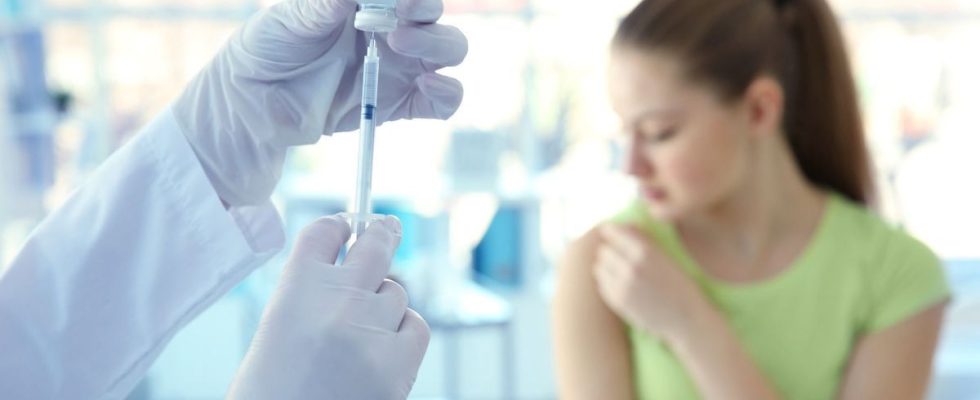Published on
Updated
Reading 3 mins.
A study published in The Lancet claims that a single dose of human papillomavirus (HPV) vaccine is enough to protect against cervical cancer. Currently, the complete vaccination schedule corresponds to two or three injections depending on age.
Cervical cancer is a cancer that can be avoided thanks to two effective and complementary interventions: screening and vaccination, which prevents papillomavirus (HPV) infections included in the vaccine. The complete vaccination schedule is based on two or three injections, each spaced several months apart.
Good news for developing countries
But a recent study published in The Lancet asserts that a single dose would be enough to protect durably against HPV 16 and 18, responsible for the disease. This work was based on the results of vaccination campaigns against cancer of the cervix already carried out in several countries. This study is the first to show the lasting effectiveness of a reduced vaccination schedule.
A discovery that could be useful to developing countries which account for 90% of deaths linked to cervical cancer. In fact, the simpler application of a single dose will be less costly than vaccination in two or three doses and will improve good compliance with the vaccination schedule by families.
The single-dose vaccine schedule already recommended in 2022 by the WHO
In 2022, the World Health Organization (WHO) had published new recommendations regarding HPV vaccination and had already advised that a single-dose vaccination schedule was as effective as a two-dose schedule: “One point deserves particular mention, namely that a single-dose vaccination regimen, called an alternative off-label single-dose regimen, may offer comparable efficacy and duration of protection to a two-dose regimen.”had indicated the WHO in a briefing note.
The WHO recommendations are:
- A one- or two-dose regimen for girls aged 9 to 14;
- A one- or two-dose regimen for girls and young women aged 15 to 20;
- A two-dose regimen given 6 months apart for women over 21 years of age.
“The primary target for vaccination is girls aged 9 to 14, before the onset of sexual activity. Vaccination of secondary targets, i.e. older boys and girls, is recommended when practical and economically feasible”, can we read on the WHO website.
What is the plan proposed today against HPV in France?
To be even more precise, remember that:
- Anti-HPV vaccination remains recommended and reimbursed with Gardasil9® between 11 and 14 years of age with two injections 6 months apart. Catch-up vaccination is recommended and reimbursed between 15 and 19 years of age with a three-injection schedule (M0, M2 and M6).
- For men who have sex with men (MSM), HPV vaccination is recommended and reimbursed up to the age of 26 (3 injections at M0, M2 and M6).
- Any new vaccination must be initiated with the Gardasil 9® vaccine. The vaccines are not interchangeable and any vaccination initiated with Cervarix® must be completed with the same vaccine.
The classic vaccination schedule remains recommended in France for the time being, because it is the one with which the prevention of precancerous and cancerous lesions of the cervix has been demonstrated (-88% risk of cancer if the vaccine is given before age of 17) but also anogenital lesions, or ENT lesions in men and women, and this without serious side effects whether in terms of autoimmune, neurological, vascular, or premature ovarian failure.
From the start of the school year in September 2023, middle school students in 5th grade will be able to be vaccinated free of charge to ensure better protection against cancers linked to human papillomaviruses. Parental consent will be required and vaccination will not be mandatory.
Cervical cancer is the fourth most common cancer in women and is caused in more than 95% of cases by the sexually transmitted human papillomavirus.
